Blog: History’s biggest automotive revolutions
If there’s one sector that doesn’t stand still, it’s the automotive sector. We know this from the many automotive clients we work with and the countless innovation projects we’ve incentivised.
To say the automotive industry is fuelling innovation is an understatement. The transformation it’s gone through, and continues to go through to this day, has been seismic. From humble beginnings in the late 1800s, with the arrival of the first automobiles, to today’s engineers turning the concept of electric and driverless vehicles into reality, there’s no stopping the world of automotive.
Dive into the archives with us as we take a look at some of the revolutions that have helped shape the sector, and set it firmly on the track to being the major industrial and economic force it’s now become.
Early engineering
The first car factory opens its doors
C1900
The first automobile factory was opened in Detroit by Ransom E Olds, who is widely recognised as being a pioneer of the American automotive industry.
He pioneered the concept of the modern assembly line, using it to build the first mass-produced car in around 1901. By 1902 his stationary assembly line had enabled him to increase his factory’s output from 425 to 2,500 the following year.
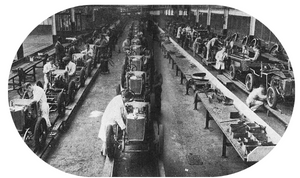
First electric vehicle
1900
When Ludwig Lohner took over the family luxury coachbuilding firm Lohner in 1887, he bought with him revolutionary ideas. He saw the future in self-powered cars, and began working on developing a battery-powered vehicle with electrical engineering pioneer Béla Egger.
He hired Ferdinand Porsche from Béla Egger’s electrical company in 1898 and together they went on to design a number of battery-powered and hybrid cars.
Porsche’s electric vehicles were exhibited at the Paris world fair in 1900 in an astonishing move that wouldn’t be out of place in today’s EV market.
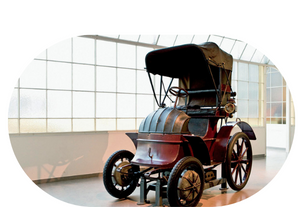
Ford invent the Model T's new engine
1908
Henry Ford unveiled Ford’s newest model, the Model T Ford, at the company’s site in Detroit in 1908.
It was the cheapest car in production to run and repair, and its affordability made it a huge hit. Many features of the car, such as its enclosed engine and transmission, semi-elliptic spring suspension, and the left-hand side steering wheel went on to be replicated by other companies for years to come.
Ford went on to produce 15 million Model Ts, and that model had the longest production run of any automobile until the Volkswagen Beetle arrived on the scene in 1972.
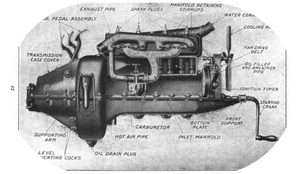
A replacement for hand cranks arrives
1911
Prior to 1911, cars were started by using a hand crank, a dangerous and sometimes fatal endeavor.
It was head of Cadillac Henry M. Leland and consulting engineer Charles Kettering who were able to develop an electrical self-starting device small enough to be fit under the bonnet around this time, an innovation that would revolutionise motor engineering.
Kettering won a Dewar Trophy for the invention in 1913 – a cup that was awarded to cars that successfully advanced the automobile industry by the RAC in the UK until 2019.
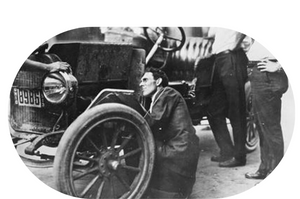
The first moving assembly line opens
1913
Ford introduced the first moving assembly line belts to his plants in 1913 enabling a huge increase in production.
Although already the cheapest car in production, this efficiency allowed Ford to drop the price even further, increasing sales exponentially.
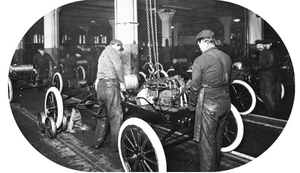
Steel replaces wood
1914
Wood was the car makers’ material of choice until manufacturer Dodge changed the playing field in 1914 with a car featuring an all-steel body.
This was a fundamental shift in the use of materials in automotive manufacturing, and one that we’ve never looked back from.
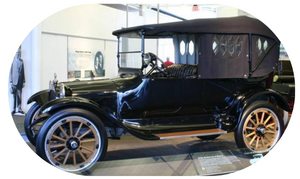
Gearboxes go automatic
1939
In 1939, General Motors launched Hydra-Matic, which enabled gears to be changed automatically, using hydraulic fluid.
Even now, more than 80 years later, this milestone is regarded as being one of the most important innovations in automotive history because it paved the way for widespread acceptance of automatic gear shifting.
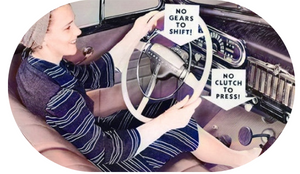
Modern living
Cars are fitted with seatbelts
1967
The idea of retractable seatbelts for vehicles had been around for several decades before it became mandatory for car drivers to wear them as a safety precaution around the late 1960s (country dependent).
In the UK it became a legal requirement for anchorage points to be included in new vehicles from 1967 and to wear them from 1983. It didn’t become compulsory to fit or wear rear seatbelts in the UK until 1987 and 1991 respectively.
Studies suggest that fatality rates amongst car occupants in accidents are reduced between 30 and 50 percent if seat belts are worn, so the impact of this milestone cannot be overstated.
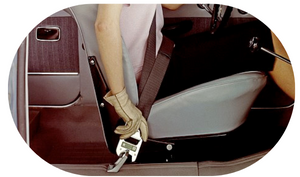
The first mass-produced hybrid vehicle
1997
The Toyota Prius really represents the advent of affordable hybrid cars.
At its time of launch, it was the world’s first mass-produced gasoline-electric hybrid, going on sale in Japan in 1997.
By 2017 the Prius family had sold over 6 million units and spawned a brand era of automotive R&D.

Affordable tech
Cars get smarter
2000s
The early 2000’s saw huge innovations in onboard technology for domestic car users, due largely to the wider adoption of mechatronics – a term originating in Japan to describe the integration of mechanical and electronic engineering.
Electronic windows had been around since the 1960s; digital dashboards and CD players since the 70s and 80s respectively; and electromagnetic parking sensors since the mid-1990s. But the early noughties saw satellite navigation systems, Bluetooth connectivity, parking cameras and automatic parking technology become common.
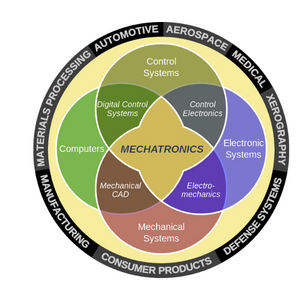
Electric vehicles gather momentum
2003
While the origin of today’s electric vehicles can arguably be traced back to the 1800s, it’s probably more truthful to look at the founding of Tesla in 2003 as the real start of the EV trend we see today.
Sales of the EV-market darling, the Toyota Prius, have been dwindling since their peak in 2012, due, in large part, to increasing competition.
By 2012 auto-tech giant Tesla had been working on developing affordable mass-market electric vehicles for seven years and was able to launch the Model S luxury sedan. It quickly became the first electric car to top the monthly sales ranking of a country and would hold the best-selling plug-in electric car worldwide for 2015, and 2016. By 2020, they’d hit their goal of building half a million cars.
Now that electric vehicles can no longer really be seen as ‘new’, Tesla – and all manufacturers of the future – are focused on improving the performance of these vehicles, in terms of speed, torque, battery range, comfortability, and sustainability.
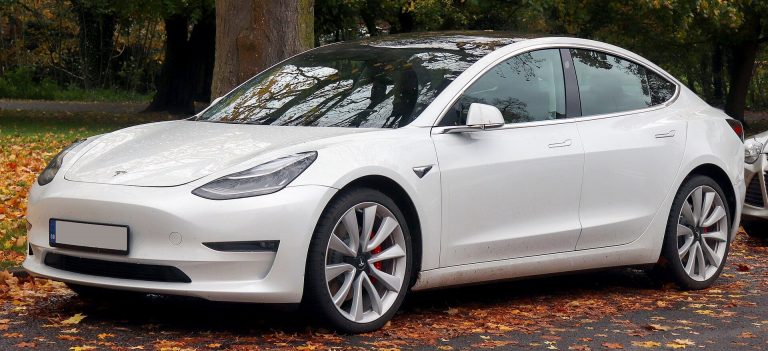
Cars no longer need drivers
2008
Amazingly, experiments to develop a self-driving car have been underway since the 1920s, with the first self-sufficient autonomous vehicles appearing in the 1980s.
However, it could be argued that the start of Google’s foray into the development of self-driving cars in 2009, at the secretive Google X lab, marks the real start of the autonomous vehicle revolution.
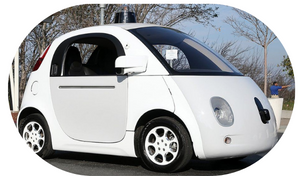
The scientists who worked for Google were involved in creating a driverless car for a Discovery Channel documentary called Prototype This!, and the resulting ‘Priobot’ became the first self-driving car to drive on public roads.
This car was a Toyota Prius retrofitted with sensors, light detection and ranging technology, cameras, and software; the first self-designed model to come out of Google (under project Waymo) was called the Firefly which had no steering wheel, gas pedal, or brake pedal, being 100% autonomous.
The Waymo project team has equipped various types of cars with self-driving equipment, including the Toyota Prius, Audi TT, Fiat Chrysler Pacifica, and Lexus RX450h and millions of test miles later announced limited rider testing of the commercial self-driving car Waymo One would start in San Francisco.
This is the story of just one tech-led development company focused on cracking the autonomous vehicle market for domestic use but there are tens, if not hundreds, of others working on the same challenge.
Just last year Honda was granted safety certification by the Japanese government for their autonomous Traffic Jam Pilot driving tech that legally allows drivers to take their eyes off the road, while Mercedes-Benz received German approval for their Automated Lane Keeping System, so the future here is bright.
What does the future hold?
If all of this happened in the last 100 years, can you even imagine what the next 100 will bring?
Will that flying car unveiled last week propel us into a new dawn of eVTOL’s (electrical vertical take-off and landing vehicles) where we leave cars to drive on the roads themselves and instead take to the skies?
- How will in-car technology pair with the rest of the world to promote connectivity and mobility for all?
- What will consumers look for in their next big-budget car purchases, and how will manufacturers keep innovating in order to offer these at record-low prices?
- The future, while exciting, looks pretty uncertain and definitely challenging for automotive suppliers so it’s paramount that they act now.
If you work in or with the automotive sector and don’t have R&D at the heart of your growth strategy then you’re simply not prepared for what’s coming down the track. Innovate now or get left behind.
And if you already are pushing the boundaries of science and technology to deliver bigger and better things across the automotive supply chain, make sure you’re being rewarded for it!
- R&D tax relief can offer a valuable cash injection for investment to R&D-active businesses
- Patent Box provides rewards for commercially successful patents
- Grant funding is available for companies with great ideas
Tell us about your business and your goals and we’ll help you find out what you’re entitled to or where that next big investment could be found.
Request a callFurther reading

